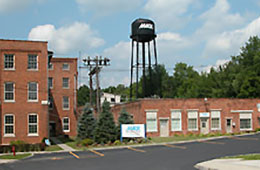Every day we see “color” all around us, but the perception of that color changes based on changing parameters. An object will appear to have [...]
Five New Machines Expand Molding Capabilities in Northern & Southern Divisions ARLINGTON, Vt. (April 12, 2022) – Mack Molding, a leading custom plastics molder and [...]
For privacy reasons YouTube needs your permission to be loaded. For more details, please see our Privacy Policy.I Accept On July 23, 2019, Mack Molding’s [...]
Mack is excited to announce the addition of BIOMEDevice Boston to the Company’s event schedule this year and invites you to come see us at [...]
Continued New Business Growth Drives Hiring at Molder & Contract Manufacturer ARLINGTON, Vt. (Feb. 5, 2019) – Mack Molding has announced staffing additions across the [...]
Tulip Connects Workers, Machines & IT Systems to Provide Real-Time Insight into Operations ARLINGTON, Vt. (Feb. 5, 2019) – Mack Molding has announced it has [...]
Tory Peeler Brings More Than 30 Years of Experience to Growing Medical Business ARLINGTON, Vt. (Feb. 5, 2019) – Mack Molding, a leading custom plastics [...]
If the double blast of winter from Harper and bitterly cold temperatures has you longing for a change of scenery, you are not alone. In [...]
For privacy reasons YouTube needs your permission to be loaded. For more details, please see our Privacy Policy.I Accept The Mack Team celebrates the Holidays [...]
Each year on Halloween the employees of Mack Molding let their inner ghouls loose by donning costumes and carving pumpkins. Their efforts are rewarded with [...]
Company Combines Northern & Southern Divisions’ Business Development Teams ARLINGTON, Vt. (Oct. 9, 2018) – Mack Molding, a leading custom plastics molder and supplier of [...]
Company Holding On-the-Spot Interviews for Operators, Technicians & Engineers ARLINGTON, Vt. (Sept. 28, 2018) – Mack Molding, a leading custom plastics molder and supplier of [...]
On Wednesday, Sept. 19, 2018, Mack was pleased to host U.S Rep. Peter Welch at the Company’s Headquarters in Arlington, Vt. Rep. Welch toured the plant [...]
Brad Williams, of Lake George, N.Y., is a senior at Clarkson University in Potsdam, N.Y., and a 2018 Mack summer intern. Brad has been working [...]
One of Mack’s 2018 summer interns is Seth Judson of Sharon, Mass. Seth is a senior at Rensselaer Polytechnic Institute in Troy, N.Y., where he [...]
Aimee Frank, who will be a freshman at Clarkson University in Potsdam, N.Y., this fall, has been spending her summer as a Mack intern. In [...]













